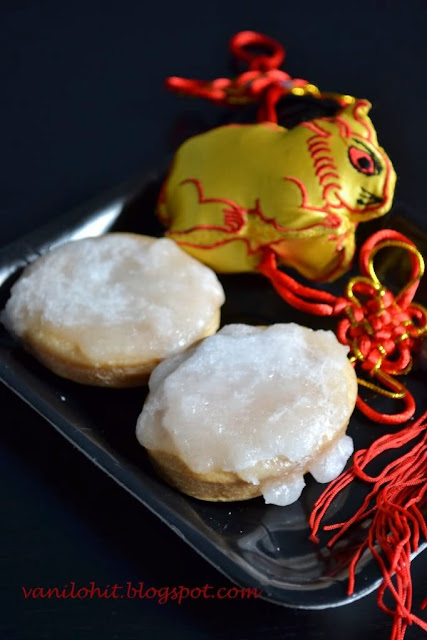ಕನ್ನಡದಲ್ಲಿ ಓದಲು ಇಲ್ಲಿ ಕ್ಲಿಕ್ ಮಾಡಿ.
We had a mixer grinder of Butterfly brand from past 3 years. My sister has been using this brand mixer from around 10 years. She suggested me this brand after my marriage. I was happy with the mixer and loved the juice jar which comes along with it! Due to our luggage limit, we sold it in Australia while relocating to India. After coming to Bangalore, I wanted to buy the same model from butterfly again! We searched and searched here, nowhere I could find the same kind of mixer :( Most of the big and branded shops won't have the Butterfly mixer these days and very few shops have some other model in Butterfly. Finally, I was able to get the same model mixer in a small shop and without a second thought, we bought it from them!! Now I have decided not to loose this mixer for any reason for at-least a couple of years.
We had been to our native recently. One of our relatives had brought some home grown Amatekayi (Ambatekayi) for us. Since we can't get all these village veggies and fruits here, our bags will be heavily loaded with these items while coming back from the native :) Amatekayi (Ambatekayi) is a kind of tangy fruit which is common in rural areas. It will have a hard skin and a fibrous seed inside. Lot of delicious recipes can be prepared using this Amatekayi. Here is the recipe of sambar using this Amatekayi. This sambar is called as 'Amati' in my place. This sambar will have a spicy, tangy and sweetish taste and goes well with rice!
Preparation time: 25 minutes
Servings: 4 - 5
Ingredients:
Amate (Ambate) kayi - 6
Cloves - 3
Coriander seeds - 1 1/4 spoon
Mustard seeds - 1/2 spoon
Dry red chillies - 3 (adjust according to taste)
Grated coconut - 1/2 cup
Salt to taste
Jaggery - 4 spoon (for sweetness)
For seasoning: oil - 2 spoon, urad dal - 1/2 spoon, mustard seeds - 1/4 spoon, pinch of asafoetida, few curry leaves
Method:
Take 3 cups of water in a vessel and cook the Amatekayi till soft.
Once the cooked Amatekayi is cool, add salt and sugar. Squeeze off the Amatekayi in that mixture and let the skin and seed remain in the gravy.
Heat 2 spoons of oil in a small wok and add cloves, red chillies, coriander seeds and mustard seeds. Roast them until you hear the spluttering sound and grind them finely along with grated coconut.
Heat oil in a heavy bottom pan, add urad dal, mustard seeds, asafoetida and curry leaves.
Add the cooked Amatekayi gravy to the seasoning and boil it for 4 - 5 minutes.
Sambar (Amati) is ready to serve with hot rice! It can be preserved upto a week in refrigerator.
We had been to our native recently. One of our relatives had brought some home grown Amatekayi (Ambatekayi) for us. Since we can't get all these village veggies and fruits here, our bags will be heavily loaded with these items while coming back from the native :) Amatekayi (Ambatekayi) is a kind of tangy fruit which is common in rural areas. It will have a hard skin and a fibrous seed inside. Lot of delicious recipes can be prepared using this Amatekayi. Here is the recipe of sambar using this Amatekayi. This sambar is called as 'Amati' in my place. This sambar will have a spicy, tangy and sweetish taste and goes well with rice!
Servings: 4 - 5
Ingredients:
Amate (Ambate) kayi - 6
Cloves - 3
Coriander seeds - 1 1/4 spoon
Mustard seeds - 1/2 spoon
Dry red chillies - 3 (adjust according to taste)
Grated coconut - 1/2 cup
Salt to taste
Jaggery - 4 spoon (for sweetness)
For seasoning: oil - 2 spoon, urad dal - 1/2 spoon, mustard seeds - 1/4 spoon, pinch of asafoetida, few curry leaves
Method:
Take 3 cups of water in a vessel and cook the Amatekayi till soft.
Once the cooked Amatekayi is cool, add salt and sugar. Squeeze off the Amatekayi in that mixture and let the skin and seed remain in the gravy.
Heat 2 spoons of oil in a small wok and add cloves, red chillies, coriander seeds and mustard seeds. Roast them until you hear the spluttering sound and grind them finely along with grated coconut.
Heat oil in a heavy bottom pan, add urad dal, mustard seeds, asafoetida and curry leaves.
Add the cooked Amatekayi gravy to the seasoning and boil it for 4 - 5 minutes.
Sambar (Amati) is ready to serve with hot rice! It can be preserved upto a week in refrigerator.















